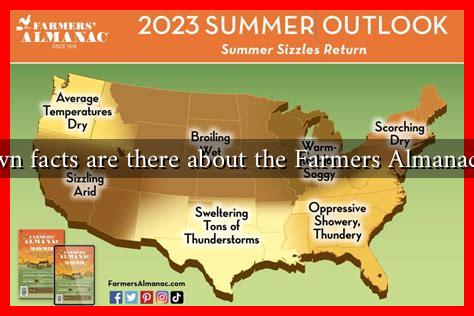-
Table of Contents
What Little-Known Facts Are There About the Farmers’ Almanac Winter Forecast?
The Farmers’ Almanac has been a trusted source for weather predictions since its inception in 1818. While many people are familiar with its long-range forecasts, there are several lesser-known facts that make the Almanac a unique and valuable resource for winter weather predictions. This article delves into these intriguing aspects, providing insights into how the Almanac operates and what sets it apart from other forecasting methods.
The Science Behind the Almanac’s Predictions
One of the most fascinating aspects of the Farmers’ Almanac is its unique methodology for predicting weather patterns. Unlike modern meteorological forecasts that rely heavily on satellite data and computer models, the Almanac employs a combination of historical weather patterns, solar cycles, and even lunar phases. Here are some key components of its forecasting process:
- Historical Data: The Almanac analyzes weather data from previous years to identify patterns and trends that may recur.
- Solar Activity: The influence of solar cycles on weather is a significant factor in the Almanac’s predictions.
. Increased solar activity can lead to changes in atmospheric conditions.
- Lunar Phases: The Almanac also considers the phases of the moon, which some believe can affect weather patterns.
This blend of traditional knowledge and observational science allows the Farmers’ Almanac to provide forecasts that are often surprisingly accurate, even if they differ from mainstream meteorological predictions.
Longevity and Tradition
The Farmers’ Almanac has a rich history that spans over two centuries. It was founded by David Young, a mathematician and astronomer, who sought to create a reliable source of weather information for farmers. The Almanac has since evolved into a cultural staple, with millions of copies sold each year. Here are some interesting historical facts:
- First Edition: The first edition of the Farmers’ Almanac was published in 1818, making it one of the oldest continuously published periodicals in North America.
- Annual Publication: The Almanac is published annually, with each edition containing weather forecasts, gardening tips, and various articles on topics ranging from cooking to astronomy.
- Community Engagement: The Almanac has a loyal following, with readers often sharing their own weather observations and experiences, contributing to a sense of community.
Accuracy and Criticism
While the Farmers’ Almanac has a reputation for accuracy, it is not without its critics. Some meteorologists argue that its predictions are too vague or overly generalized. However, studies have shown that the Almanac’s long-range forecasts can be surprisingly reliable. For instance, a study conducted by the National Oceanic and Atmospheric Administration (NOAA) found that the Farmers’ Almanac’s winter forecasts were accurate about 80% of the time over a 30-year period.
Despite the skepticism, many people continue to rely on the Almanac for their winter weather planning. Its forecasts often provide a general overview of what to expect, which can be particularly useful for farmers and outdoor enthusiasts.
Unique Features of the Winter Forecast
The Farmers’ Almanac’s winter forecast is not just about predicting snow and cold temperatures; it also includes a variety of unique features that enhance its value:
- Winter Weather Severity Index: The Almanac provides a severity index that categorizes winter conditions as “cold and snowy,” “mild,” or “average,” helping readers prepare accordingly.
- Regional Forecasts: The Almanac divides the U.S. into several regions, offering tailored forecasts that account for local climate variations.
- Seasonal Tips: Each winter forecast includes practical advice on how to prepare for the season, from winterizing homes to tips for safe travel.
Conclusion
The Farmers’ Almanac remains a beloved resource for many, offering a blend of tradition, science, and community engagement. Its unique forecasting methods, historical significance, and practical advice make it a valuable tool for anyone looking to navigate the winter months. While it may not always align with modern meteorological predictions, its long-standing reputation for accuracy and reliability continues to resonate with readers. Whether you’re a farmer, an outdoor enthusiast, or simply someone who enjoys the changing seasons, the Farmers’ Almanac provides insights that can help you prepare for whatever winter has in store.
For more information on the Farmers’ Almanac and its winter forecasts, visit their official website at Farmers’ Almanac.





